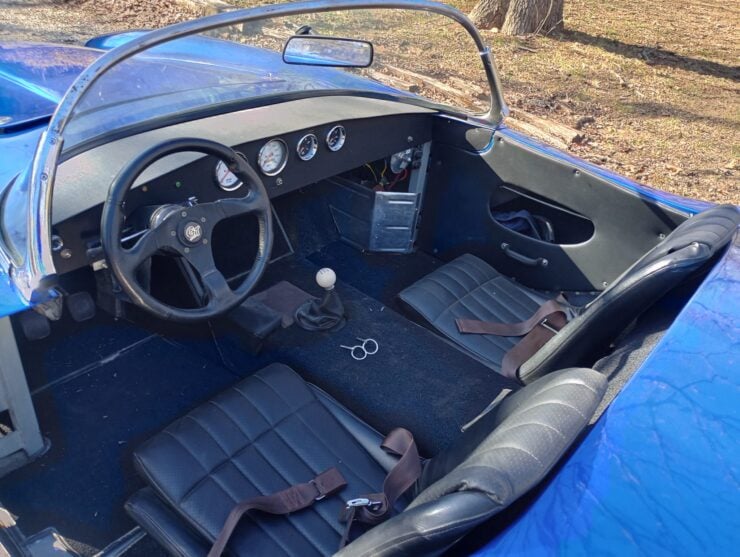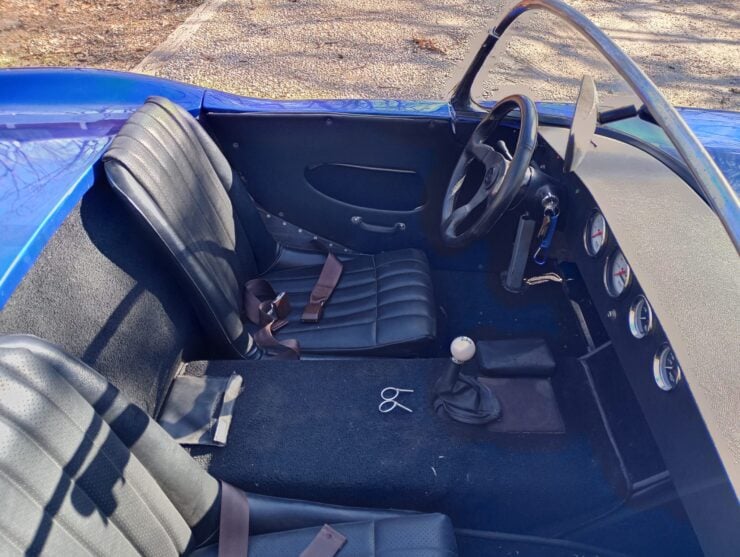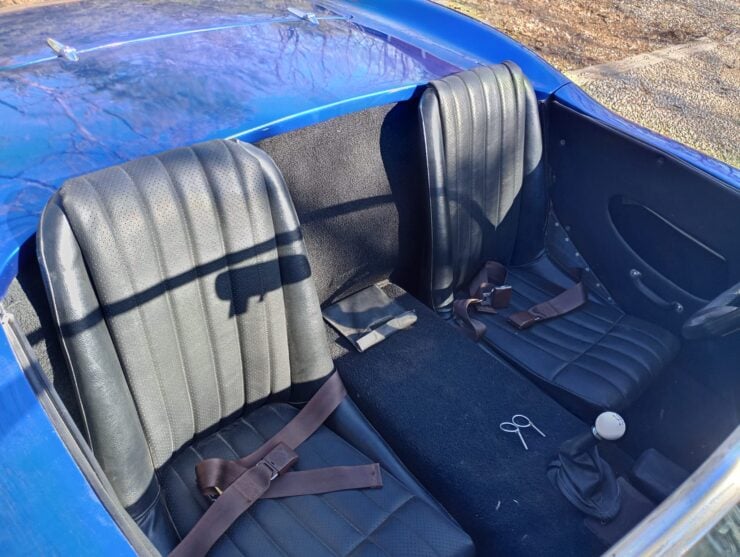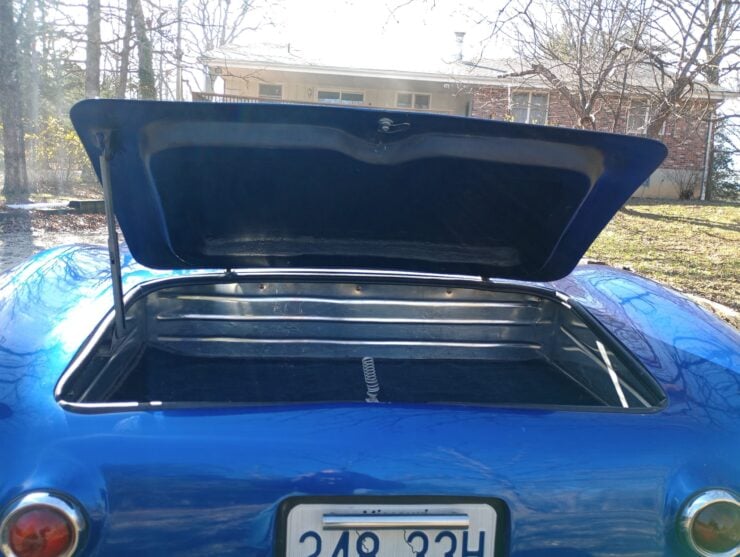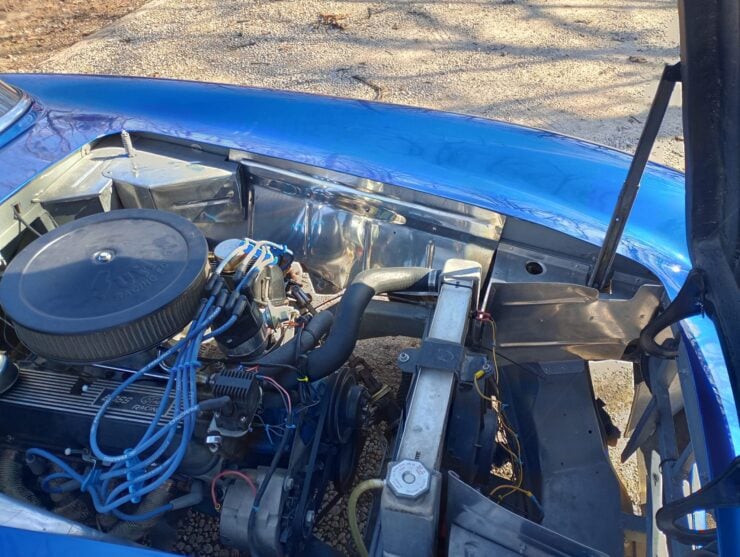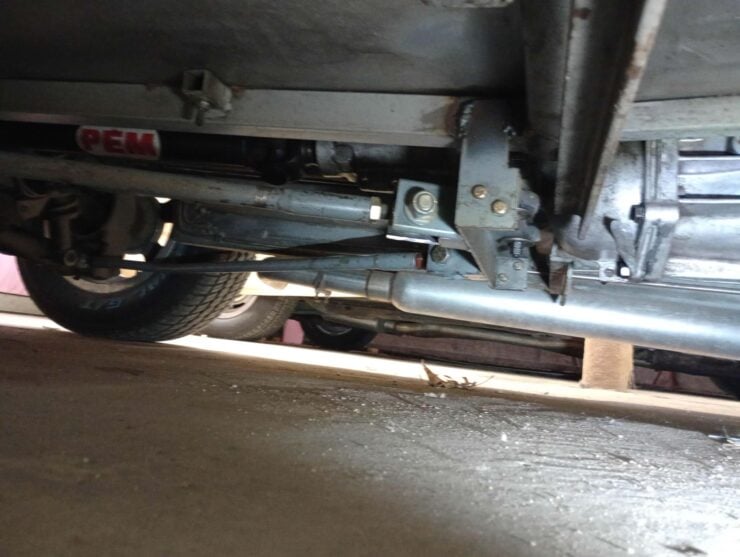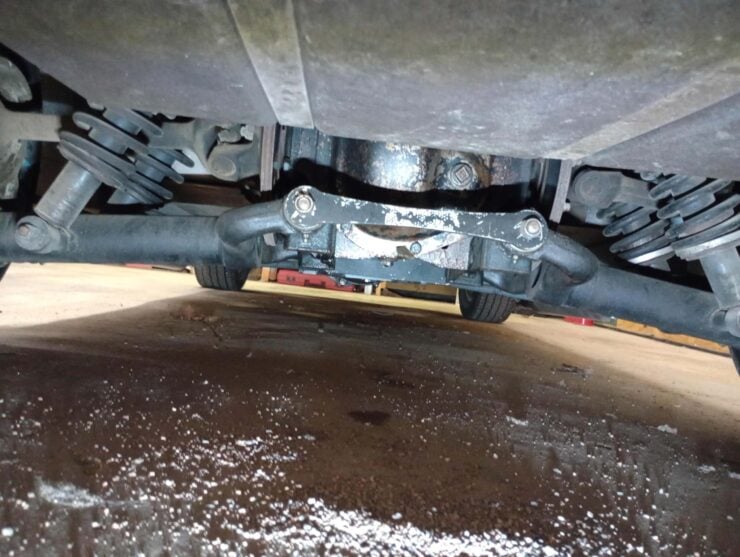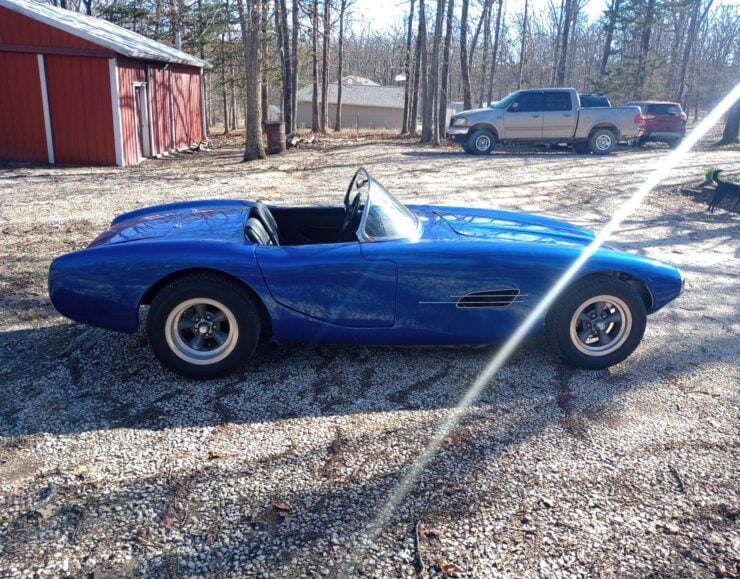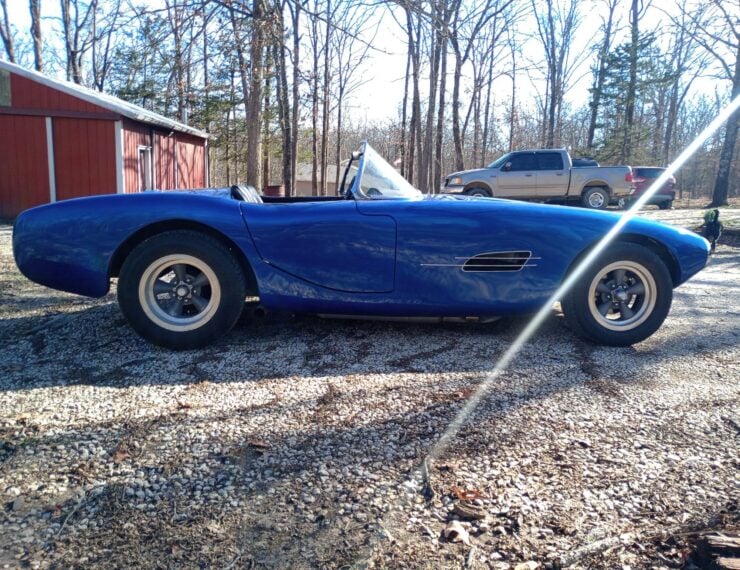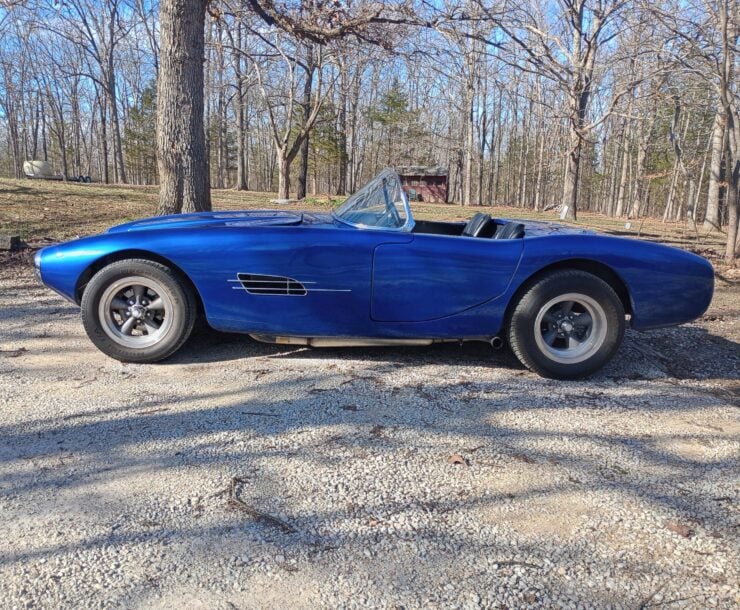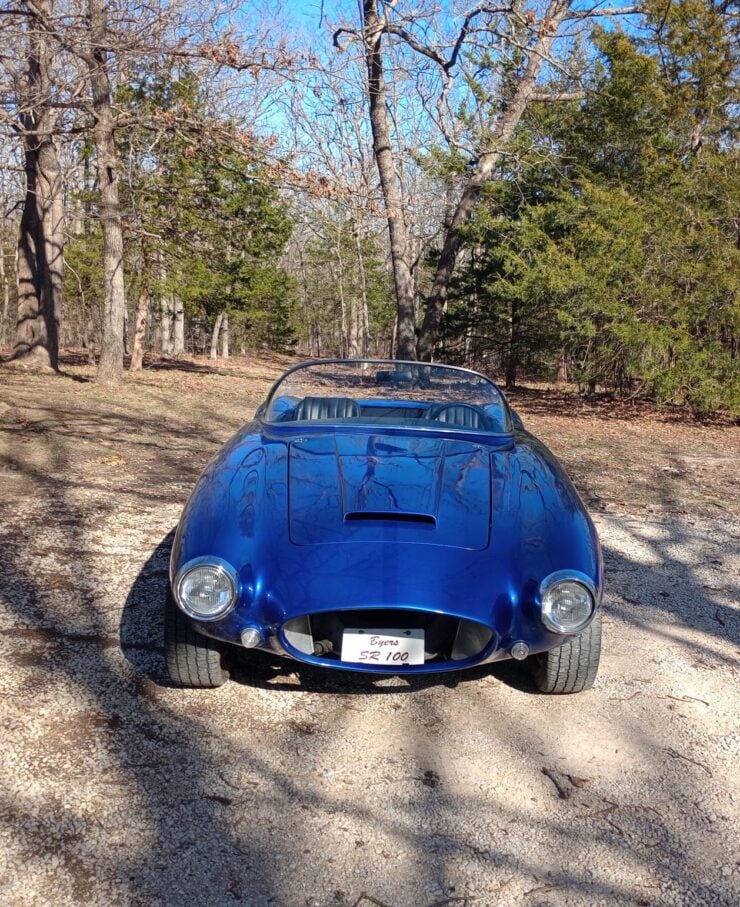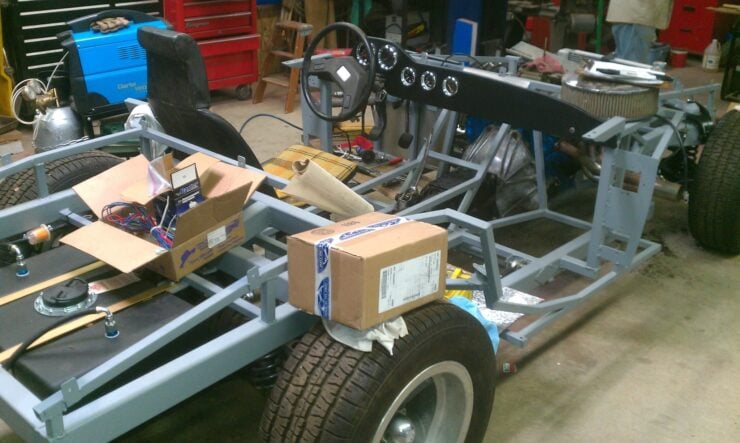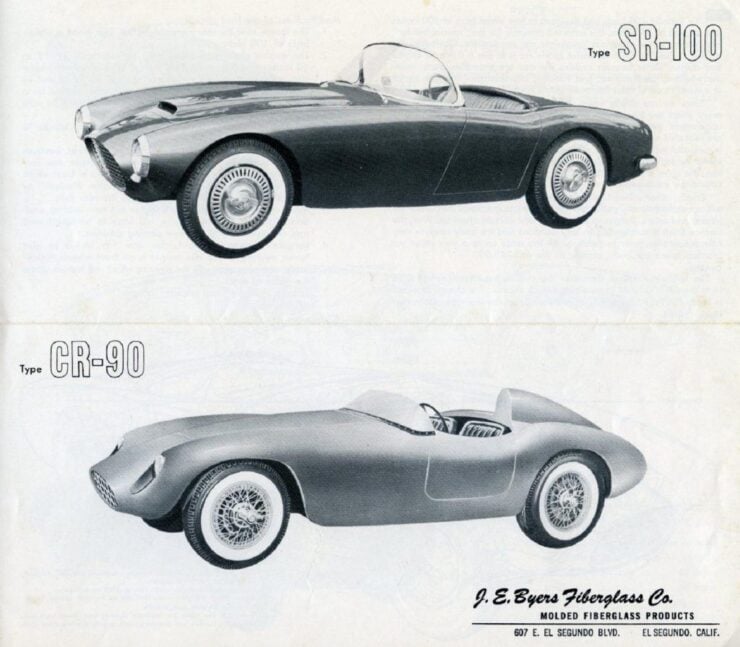This is a Byers SR-100 that was originally built in the late 1950s. The SR-100 was developed in the USA by Jim Byers as a Corvette competitor that people could build in their own garage.
The Byers SR-100 was featured on the cover of Road & Track magazine in February of 1957. They called it “The World’s Most Beautiful Sports Car” and the publicity helped launch the car into the national spotlight.
Fast Facts – The Byers SR-100
- The Byers SR-100 is a fiberglass-bodied sports car developed by Jim Byers in the late 1950s as an affordable Corvette competitor. Its striking design earned it a place on the cover of Road & Track in 1957, described as “The World’s Most Beautiful Sports Car,” significantly elevating its profile.
- Jim Byers, previously involved with Victress and Meteor fiberglass cars, independently developed the SR-100, selling about 25 bodies directly. Kellison later produced approximately 25 more using Byers’ original molds. Many customers completed these kits at home, resulting in unique builds and limited surviving examples.
- Fiberglass, sometimes called as the “carbon fiber of the 1950s,” enabled intricate automobile body designs that were lightweight, durable, and rust-proof. Initially praised for these characteristics, its reputation suffered later due to widespread use in low-quality replica cars, though major automakers like Chevrolet and Ferrari utilized it in production models.
- The featured SR-100 was built in Missouri on a Kaiser chassis, later upgraded to a custom tube-frame with Jaguar rear suspension. Powered by a modified Ford 289 V8 paired with a five-speed manual gearbox, it’s fully restored and currently listed for sale with a Missouri title and refurbishment documentation.
Fiberglass: The Carbon Fiber Of The 1950s
Fiberglass has been called the carbon fiber of the 1950s, and it’s an apt comparison. This space-age composite material allowed complex compound shapes to be created quickly and easily from molds, and the resulting part would be strong, lightweight, and impervious to rust.
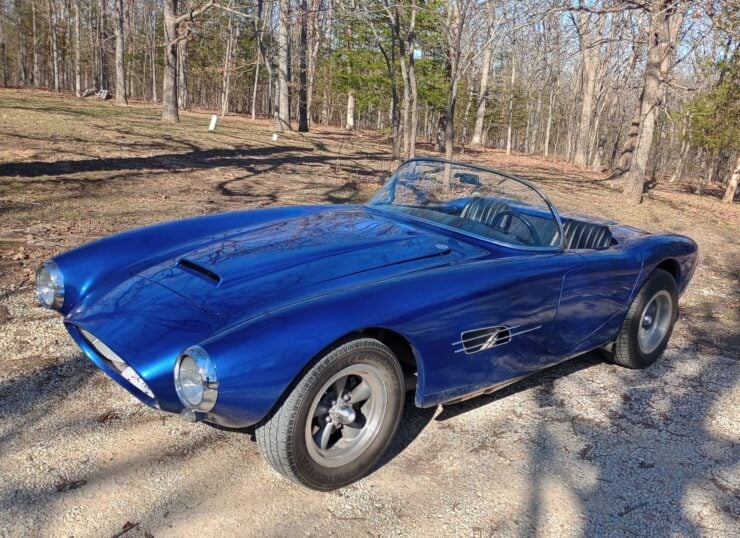

This was long before the time that a million replica car manufacturers would appear and churn out innumerable low-quality fiberglass cars. This would tarnish the use of fiberglass in the eyes of many, but there was a time when even Ferrari released a car with a full fiberglass body.
The arrival of the Chevrolet Corvette in the early 1950s helped to popularize fiberglass for use in automotive bodies, though it was far from the first fiberglass car – a cottage industry had already popped up by this time offering lightweight fiberglass car bodies that people could buy to build their own sports car at home.
A History Speedrun: The Byers SR-100
The Byers SR-100 was developed by Jim Byers in the late 1950s. He got his start working on fiberglass at Victress earlier that same decade, he then partnered with Dick Jones to design and develop the molds for the Meteor SR-1 sports car.
In the mid-1950s Jim had acquired ample knowledge about car design and the use of fiberglass so he amicably left Meteor and developed his own design – the Byers SR-100. The design was heralded as one of the finest of the post-WWII fiberglass specials, and some went so far as to call it “The World’s Most Beautiful Sports Car,” including Road & Track magazine when they put an SR-100 on the cover in 1957.
John Bond, the owner and publisher of Road & Track, liked the Byers SR-100 so much that he partnered with Jim Byers and built his own. It would be the only car he ever built himself, a testament to just how much he loved Jim’s design.
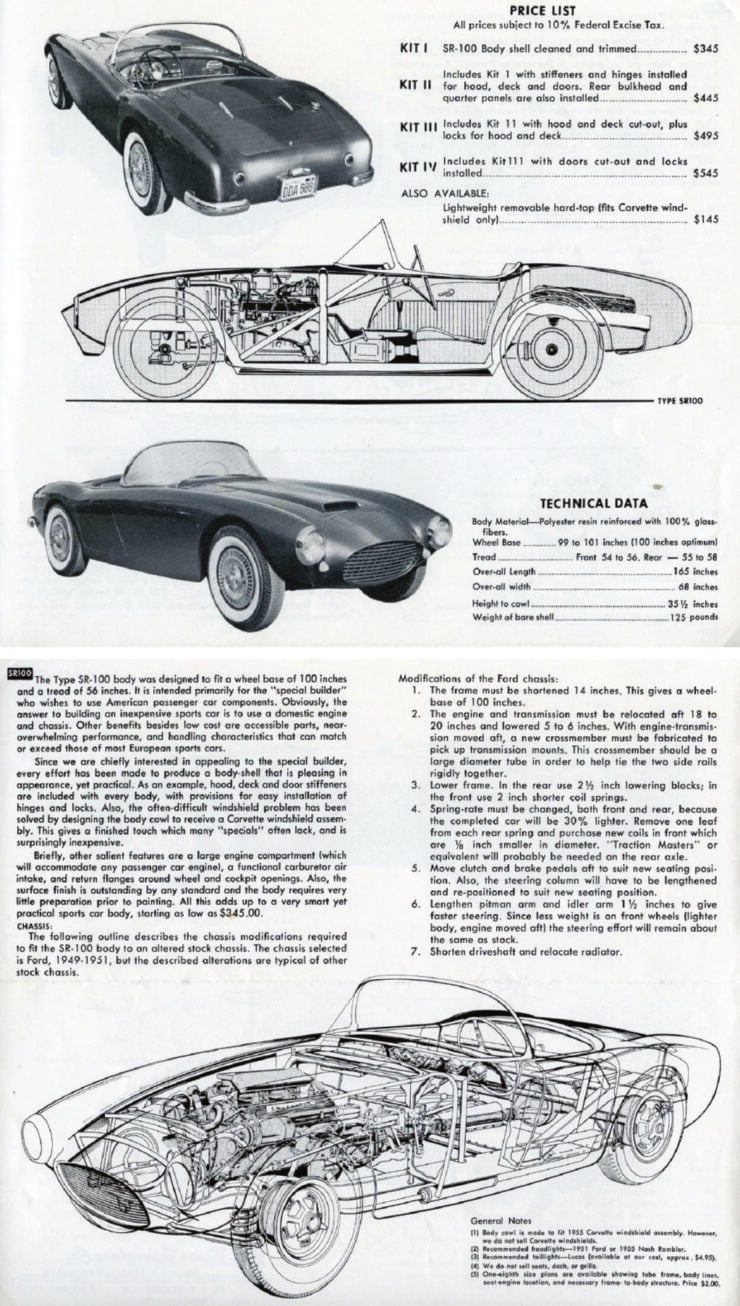


The SR-100 was advertised in the back of automotive magazines of the time alongside the Byers CR-90 which was designed for shorter wheelbase chassis. Customers would order a body from Byers, then install it to a suitable chassis in their garage. As a result of this plenty of variance among the completed examples of the car.
In total it’s believed that just 25 bodies were made. Kellison would buy the design and molds, and produce about 25 examples as well, bringing the total to roughly 50. It’s not known exactly how many were built into completed cars, but only a handful have survived to the current day.
The Byers SR-100 Shown Here
The car you see here is an original Byers SR-100 that was originally built on a Kaiser-sourced chassis in Springfield, Missouri in the late 1950s. By the 1970s it had been put into storage where it would remain for the better part of 40 years, before being rediscovered in 2011.
Once it was acquired, the car was stripped down and completely rebuilt. The Kaiser was beyond repair, and also perhaps a little simple in its design for sports car use, and as a result a new tube-frame chassis was fabricated and used instead.
The original Kaiser independent suspension was kept, and paired with independent rear suspension sourced from Jaguar, similar to that used in the Jaguar E-Type. Front disc brakes were fitted, sourced from a GMC, and the Jaguar rear end has inboard disc brakes.
The car had been fitted with a Ford 289 (4.7 liter) V8 earlier in its life, and this engine remains in use in the car today. It was given a Holley double-pumper carburetor, a new intake manifold, wrapped headers, and an improved camshaft to boost performance.
Power is sent back through a T5 5-speed manual transmission to the rear wheels. The car rides on 15″ five-spoke wheels with polished barrels, currently fitted with a mixed set of Cooper Cobra and BF Goodrich tires.
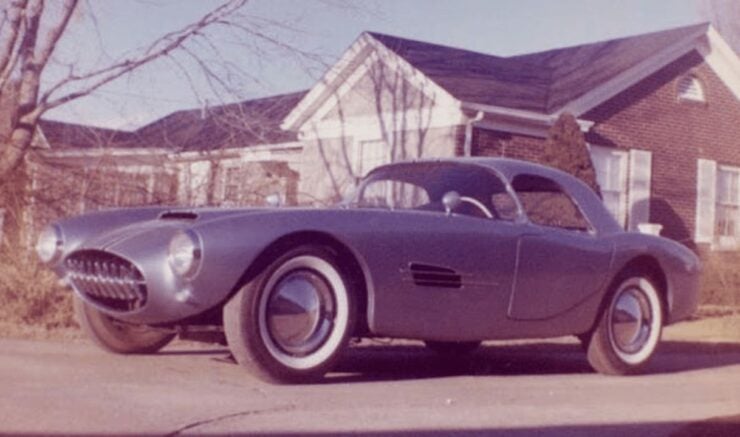


The interior is trimmed in black upholstery, including the seats and door panels, it has black carpeting, a windshield-mounted rearview mirror, a white shift knob, lap belts, and map pockets. It’s currently showing 9,000 miles on the odometer, but this was fitted during the rebuild, and as a result the complete mileage since the vehicle was new is unknown.
The car is now being offered for sale out of Bourbon, Missouri with refurbishment photos, a custom hardtop, and a Missouri title listing it as a 1960 model. If you’d like to read more about it or place a bid, you can visit the listing here.
Images courtesy of Bring a Trailer
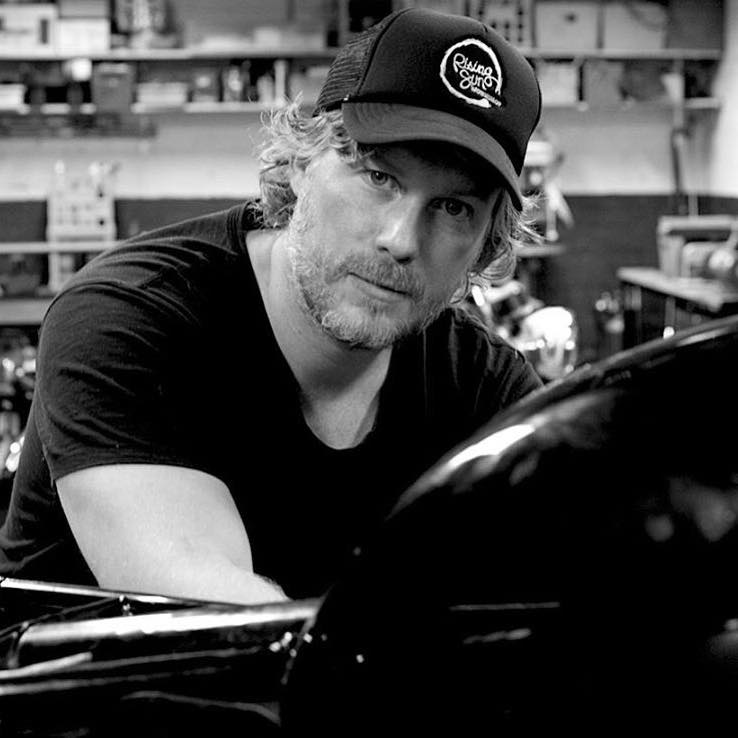

Articles that Ben has written have been covered on CNN, Popular Mechanics, Smithsonian Magazine, Road & Track Magazine, the official Pinterest blog, the official eBay Motors blog, BuzzFeed, Autoweek Magazine, Wired Magazine, Autoblog, Gear Patrol, Jalopnik, The Verge, and many more.
Silodrome was founded by Ben back in 2010, in the years since the site has grown to become a world leader in the alternative and vintage motoring sector, with well over a million monthly readers from around the world and many hundreds of thousands of followers on social media.


